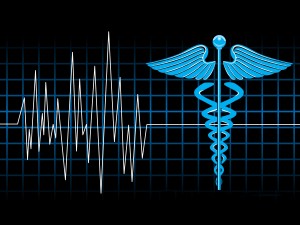Technological advancements have made streamlining processes and optimizing operations possible universally, with the impact affecting the largest corporations all the way down to our daily lives. One area where the application of the latest technology is evident is in public safety, and in particular the help it provides first responders. Here’s a look at the benefits that technology provides for emergency responders — from greater intelligence to better communications.
Personnel Management and Automatic Vehicle Location Systems
Personnel systems and Automatic Vehicle Location (AVL) systems give first responders an instantaneous view of their personnel, vehicles and medical equipment. Through the use of technology, a real-time status of the entire operation allows first responders to track down equipment, make decisions on dispatching personnel and know immediately if any areas are understaffed.
Intelligence and Computer-Aided Dispatch
A main theme behind the implementation of technology in the vehicles and dispatch offices of EMTs and first responders is eliminating paperwork. When first responders are bogged down in paperwork, they cannot properly focus on their efforts to provide response to emergencies quickly and effectively. Computer-Aided Dispatch (CAD) systems digitize the act of managing incidents, allowing individuals to enter them into a management system from dispatch or from vehicle-mounted computers.
Within this system, there is a running account of what’s happening, enabling quick decisions. This data can also be pushed into a records management system (RMS). With an archive of events, CAD systems can run reports and first responders can leverage the intelligence gleaned for a more effective response strategy in the future.
Electronic Patient Care Reporting
Electronic Patient Care Reporting (ePCR) is a reporting and filing system for first responders for managing the medical side of the operation, rather than the logistical side. No longer do emergency personnel have to worry about misplacing or throwing out important medical records. These systems are also more secure than a paper filing system and allow personnel to quickly file reports and return to work immediately.
Mass Notification Systems
The prevalence of cell phones and social media have given first responders an advantage when it comes to receiving calls, including civilian distress applications. Civilian distress applications can be downloaded onto a smartphone, and used to notify the public, law enforcement, or medical personnel of an event. Early responders can utilize these apps like they are accepting 911 calls. By doing so, they stand to reduce call qualification time by using GPS to pinpoint exactly where the distress call is coming from. The caller’s identity can also be determined, further reducing time to intervention.
Cell phone prevalence also brings with it social media, as many smartphone owners regularly use their favorite social media apps on their phones. Monitoring social media can give early responders information on events, enabling the proper planning and decision-making on the go. Additionally, social media acts as a useful platform for public safety announcements.
Technology in the right hands is a wonderful thing, and it’s even better when technology is put to good use. With advances in technology in public health, first responders are leveraging their intelligence and improving communications, which is leading to better response and, overall, more lives saved.
Author Bio:
Cheryl Bikowski is Marketing Communications Supervisor of Gamber-Johnson in Stevens Point, WI. Gamber-Johnson is a leading supplier of vehicle docking stations and vehicle computer mounts and is a member of the Leggett & Platt Commercial Vehicle Products (CVP) Group.
- California Casualty Earns Financial Stability Rating® of A, Exceptional, From Demotech, Inc. - April 28, 2025
- Music & Arts Grant Recipients – 2024 - December 13, 2024
- Understanding Auto and Home Insurance Rate Changes - December 3, 2024

